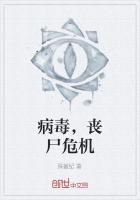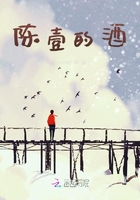But at what cost? That??s the question posed by outraged cloning researchers,whopoint to an abundance of evidence that cloning adult animals both endangers themother and can lead to unacceptable defects in the offspring. The vast majority ofsurrogate mothers - more than 90 percent,according to some estimates - miscarryearly on. Many new-borns have poorly developed lungs and failing hearts,and cattlehave been born with deformed heads.“ To ignore these outcomes seems to me to becriminally irresponsible,”says Harry Griffin of Scotland??s Roslin Institute,the labthat introduced Dolly in 1997.
Scientists aren??t sure why the animals aren??t normal. Some difficulties seemassociated with the cloning process itself. A cell taken from adult tissue may possessall of the genes needed to make a completely new animal,but most of the genes havebeen turned off. A skin cell,for example,has deactivated all of its genes except forthose that tell it how to be a skin cell. When cloners take the genetic material from askin cell and put it into an unfertilized egg,the egg has to very quickly reprogram thatmaterial so that all of the genes required for a new animal get turned back on. “ It??sremarkable that it occurs at all,”says Grifffin. “ It??s not at all surprising that thingsmight go wrong. ”
Zavos has claimed in the past that he will rigorously screen cloned humanembryos. But no screening test can currently reveal which eggs have done the best joof reprogramming adult cells - although several research groups are working todevelop such a test for agricultural use.
Until they succeed,an infertile couple that attempts human cloning will faceuncertain dangers. But they should be allowed to make an informed choice,accordingto Randolfe Wicker,founder of the Clone Rights United Front,a group in New YorkCity that promotes human cloning.“You??d have to be crazy not to see the bad resultsthey??ve had in animals,”Wicker says. “ I agree,it is at this point risky andexperimental. But if no one ever takes a chance,you won??t get any progress. ”Not all clones meet with disaster .“We??ve had a few born lately that have reallyhad no problems at all,” says Hill,although scientists estimate that fewer than aquarter of newborns would survive without intensive care. Even apparently healthyclones like Dolly and Second Chance may hide side effects that won??t crop up foryears. One cloned calf developed normally for six weeks and then mysteriouslystopped producing red blood cells and died. Scientists shudder when they contemplatesomething like that happening to a child.
Still,other reproductive technologies once deemed too risky to try in humanshave become commonplace. Wicker plans to clone himself when it??s proven safe. Hepredicts that the birth of one adorable cloned child could make people rethink theiropposition to human cloning in the same way the birth of Louise Brown changedperceptions of“ test-tube babies”in 1978. “ If a normal child is born who has beenconceived through human cloning,we win the argument,”says Wicker. But if thefirst human clones turn out sickly or deformed,desperate couples who take the riskmay find that they??ve lost a whole lot more than just a theoretical debate.
Notes on language a nd cultur e
1. veterinary: Veterinary is used to describe the work of a vet ( 兽医) and the
medical treatment of animals.
2. Texas A & M University: Texas A & M University is the United State??s oldestpublic institution of higher education. When it was opened on October 4 ,1876 ,itwas known as the Agricultural and Mechanical College of Texas. Effective onAugust 23,1963,the Texas Legislature approved a bill changing the name toTexas A & M University. The new name reflects the diversified and expandedcharacter of the institution,which ranks among the top ten national universities inresearch. Enrollment in the fall of 2000 was a record 44 ,026 ,making theuniversity the fourth-largest in the nation.
3. most cloned animals never even make it to birth: most cloned animals will neverbe born successfully - they will die before they are born
4. deformity: A deformity is a part of someone??s body which is the wrong shapebecause of injury or illness.
5. diabetes: Diabetes is an illness in which someone??s body is unable to control thelevel of sugar in their blood.
6. complication: A complication is an additional medical problem which makes itmore difficult to treat an existing illness.
7. hooked up to: If one thing is hooked up to another ,they are connected to eachother.
8. serenely: If you do something serenely,then you do it calmly and quietly.
9. to all appearances: If something is true to all appearances,it seems from what youknow about it that it is true.
10. if Second Chance??s health problems are behind him,many other animal cloneshave not fared so well: if Second Chance??s health problems are in the past,manyother animals have not recovered from their health problems so well
11. deform: If something deforms a person??s body or an object,it causes it to have anunnatural shape or appearance.
12. peril: A peril is a great danger .
13. fertility clinic: A woman who is fertile can have babies. A fertility clinicspecializes in helping infertile couples to bear children.
14. cutting-edge: Cutting-edge is used to describe something very modern and with allthe newest features.
15. outrage: If something outrages you,it makes you extremely shocked and angry.
16. an abundance of: a large quantity of
17. defect: fault or imperfection in a person or thing
18. surrogate mother: woman who has agreed to give birth to a baby on behalf ofanother woman
19. miscarry: If a woman miscarries,she has a miscarriage,i. e. she gives birth to afoetus ( 胎儿) before it is properly formed,with the result that it cannot live.
20. Roslin Institute: Roslin Institute is one of the world??s leading centers for researchon farm and other animals in Edinburgh,Scotland. On 5 July 1996,a group ofscientists at the Roslin Institute created Dolly,the first mammal cloned from anadult cell,rather than embryonic,although the world didn??t find out until earlythe following year.















